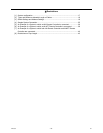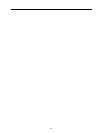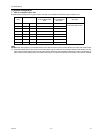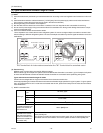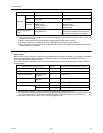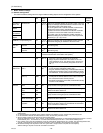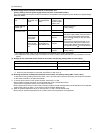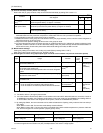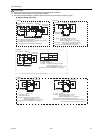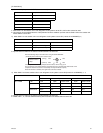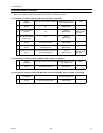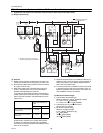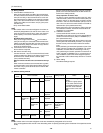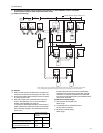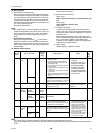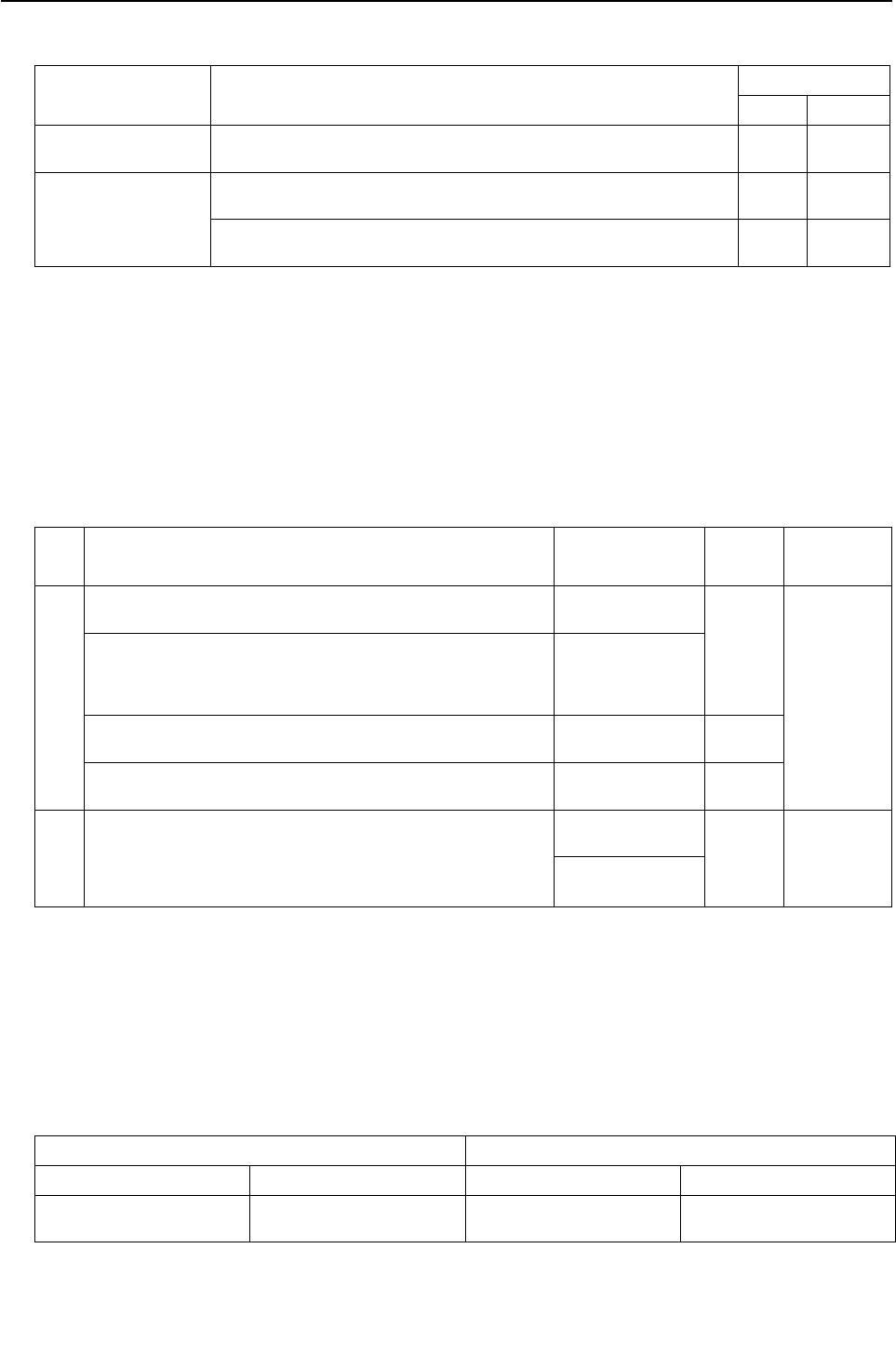
[ II Restrictions ]
- 22 -
HWE0803A GB
(5) Various start-stop controls (Indoor unit settings)
Each indoor unit (or group of indoor units) can be controlled individually by setting SW 1-9 and 1-10.
*1. Do not cut off power to the outdoor unit. Cutting off the power supply to the outdoor unit will cut off the power supply to the
crankcase heater and may cause the compressor to malfunction when the unit is put back into operation.
*2. Not applicable to units with a built-in drain pump or humidifier.
*3. Models with a built-in drain pump cannot be turned on/off by the plug individually. All the units in the same refrigerant cir-
cuits will be turned on or off by the plug.
*4. Requires that the dipswitch settings for all the units in the group be made.
*5. To control the external input to and output from the air conditioners with the PLC software for general equipment via the
G(B)-50A, set SW1-9 and SW1-10 to ON. With these settings made, the power start-stop function becomes disabled. To
use the auto recovery function after power failure while these settings are made, set SW1-5 to ON.
(6) Miscellaneous settings
Cooling-only setting for the indoor unit: Cooling only model (Factory setting: SW3-1 "OFF.")
When using indoor unit as a cooling-only unit, set SW3-1 to ON.
(7) Various types of control using input-output signal connector on the outdoor unit (various connection options)
*4. By setting Dip SW5-5, the Low-noise mode can be switched between the Capacity priority mode and the Low-noise pri-
ority mode.
When SW5-5 is set to ON: The low-noise mode always remains effective.
When SW5-5 is set to OFF: The low noise mode is cancelled when certain outside temperature or pressure criteria are
met, and the unit goes into normal operation (capacity priority mode).
*5. Each outdoor unit in the system with multiple outdoor units requires the signal input/output setting to be made.
*6. Take out signals from the outdoor unit (OC) if multiple outdoor units exist in a single system.
Function
Operation of the indoor unit when the operation is resumed after the unit
was stopped
Setting (SW1)
*4 *5
910
Power ON/OFF by the
plug
*1,*2,*3
Indoor unit will go into operation regardless of its operation status before
power off (power failure). (In approx. 5 minutes)
OFF ON
Automatic restoration
after power failure
Indoor unit will go into operation if it was in operation when the power was
turned off (or cut off due to power failure). (In approx. 5 minutes)
ON OFF
Indoor unit will remain stopped regardless of its operation status before
power off (power failure).
OFF ON
Type Usage Function
Terminal
to be
used
*1
*1. For detailed drawing, refer to "Example of wiring connection".
Option
Input Prohibiting cooling/heating operation (thermo OFF) by an external
input to the outdoor unit.
DEMAND (level) CN3D
*2
*2. For details, refer to 1) through 4) shown below.
Adapter for
external input
(PAC-
SC36NA-E)
Performs a low level noise operation of the outdoor unit by an ex-
ternal input to the outdoor unit.
* It can be used as the silent operation device for each refrigerant
system.
Low-noise mode
(level)
*3 *4
*3. Low-noise mode is valid when Dip SW4-4 on the outdoor unit is set to OFF. When DIP SW4-4 is set to ON, 4 levels of
on-DEMAND are possible, using different configurations of low-noise mode input and DEMAND input settings.When 2
or more outdoor units exist in one refrigerant circuit system, 8 levels of on-DEMAND are possible.
Forces the outdoor unit to perform a fan operation by receiving sig-
nals from the snow sensor.
*5
Snow sensor signal
input (level)
CN3S
Cooling/heating operation can be changed by an external input to
the outdoor unit.
Auto-changeover CN3N
Out-
put
How to extract signals from the outdoor unit
*It can be used as an operation status display device.
*It can be used for an interlock operation with external devices.
Operation status of
the compressor
*5
CN51 Adapter for
external out-
put
(PAC-
SC37SA-E)
Error status
*6
Low-noise mod is effective. Capacity priority mode becomes effective.
Cooling Heating Cooling Heating
TH7<30°C[86°F] and
63HS1<32kg/cm
2
TH7>3°C[37°F] and
63LS>4.6kg/cm
2
TH7>35°C[95°F] or
63HS1>35kg/cm
2
TH7<0°C[32°F] or
63LS<3.9kg/cm
2




